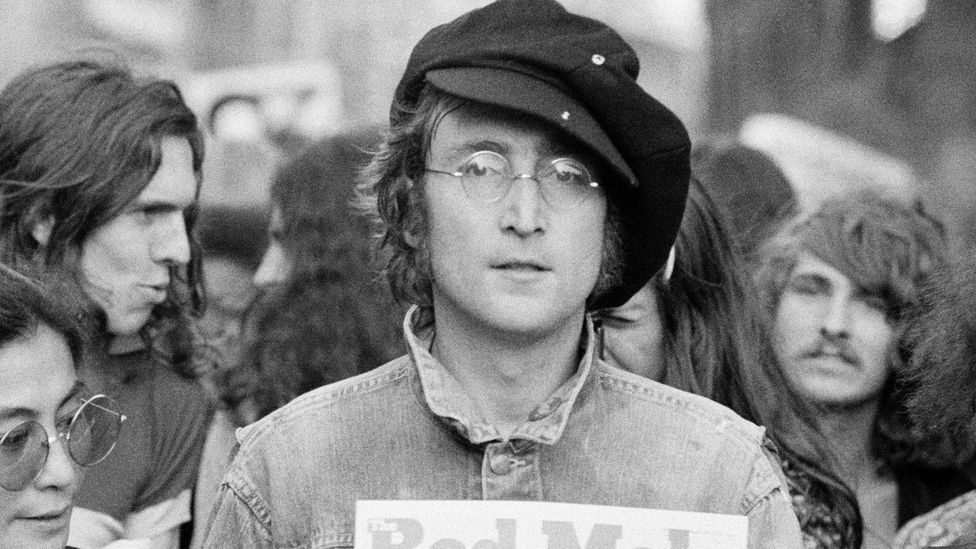In the annals of musical history, a handful of bands have indelibly imprinted themselves upon the collective consciousness, and none have accomplished this feat quite like The Beatles. Their remarkable odyssey through the realm of music, spanning more than a decade, was characterized by unparalleled intricacy, innovation, and, on occasion, creative discord. One such discord revolved around the compositions ‘Lady Madonna’ and ‘Get Back,’ with John Lennon, provocatively, regarding the latter as “an improved rendition of ‘Lady Madonna.'”
Before embarking on the enthralling tale of these two iconic compositions, let us pause to revere the profound influence and originality that The Beatles contributed to the music domain. Consisting of John Lennon, Paul McCartney, George Harrison, and Ringo Starr, this illustrious British rock ensemble captivated the affections of millions with their ageless harmonies and avant-garde musical experiments. As they metamorphosed, The Beatles’ sonorous trajectory transitioned from pop and rock ‘n’ roll to compositions of greater complexity and experimentation.
In 1968, The Beatles unveiled ‘Lady Madonna’ as a self-contained single. This blues-infused creation astounded the world, scaling the pinnacles of the United Kingdom’s charts and garnering international acclamation. Remarkably, ‘Lady Madonna’ never found a residence within The Beatles’ pantheon of studio albums, rendering it an unparalleled gem in their expansive discography.
Paul McCartney, the mastermind behind this opus, once unveiled that ‘Lady Madonna’ drew its inspiration from a portrayal of a Malayo-Polynesian woman, adorned with her triad of juvenile progeny. He expounded upon the image as possessing a “Madonna-esque quality,” emblematic of the profound maternal-child connection. This depiction, seized during the 1960s, etched an indelible impression upon McCartney, catalyzing the inception of ‘Lady Madonna.’
McCartney’s wellspring of inspiration underscores the profound interplay between visual artistry and music, accentuating the reality that creative genius frequently transcends the confines of a singular artistic medium.
In 1970, The Beatles unveiled their ultimate studio offering, ‘Let It Be.’ Concluding the album was the composition ‘Get Back,’ a piece which John Lennon perceived as a mirror image of ‘Lady Madonna.’ Nonetheless, the inception of ‘Get Back’ was meticulously documented in Peter Jackson’s eponymous documentary. The documentary illuminates McCartney’s spontaneous conception of ‘Get Back’ at Apple Studios in London, emphasizing its extemporaneous character.
‘Get Back’ venerates the art of simplicity, signifying a return to The Beatles’ musical origins and completing their cyclical journey. This composition stands as a timeless classic, emblematic of the ensemble’s remarkable knack for effortlessly fashioning unforgettable melodies.
During his ultimate conversation with David Sheff, John Lennon controversially contended that ‘Get Back’ constituted a “superior iteration of ‘Lady Madonna,'” characterizing it as a “lively rewrite.” This statement, while provocative, elicits intriguing contemplation regarding the creative process within The Beatles and the subtleties of songcraft.
It merits acknowledgment that although Lennon may have discerned correspondences between ‘Lady Madonna’ and ‘Get Back,’ a closer examination unveils conspicuous disparities between these musical productions. The commonalities chiefly reside in the fact that both compositions emanated from the same ensemble, an ensemble celebrated for its eclectic and progressing musical genre.
‘Lady Madonna’ personifies a bluesy, boogie-woogie style, featuring McCartney’s distinctive piano-driven melody and vocal resonance. Conversely, ‘Get Back’ gravitates toward a more rock ‘n’ roll soundscape, characterized by an infectious guitar riff and a vivacious, up-tempo cadence. While both compositions epitomize The Beatles’ exceptional aptitude for songwriting, they cater to distinct musical proclivities.
The timeless allure of The Beatles lies in their perpetual propensity for innovation and reinvention within their melodic oeuvre. From their nascent days of Beatlemania to their subsequent, more experimental opuses, the ensemble’s versatility remains genuinely astonishing. ‘Lady Madonna’ and ‘Get Back’ serve as testament to this versatility, standing as affirmations of The Beatles’ ability to adapt, chameleon-like, to diverse musical genres and idioms.
In summation, the discourse encompassing whether ‘Get Back’ surpasses ‘Lady Madonna’ is a subject of fascination. While John Lennon’s assertion infuses an element of dispute into this conversation, it remains imperative to recognize the distinct attributes of each composition. Both opuses exemplify superlative musical artistry, and their individuality contributes to the rich tapestry of The Beatles’ legacy.
